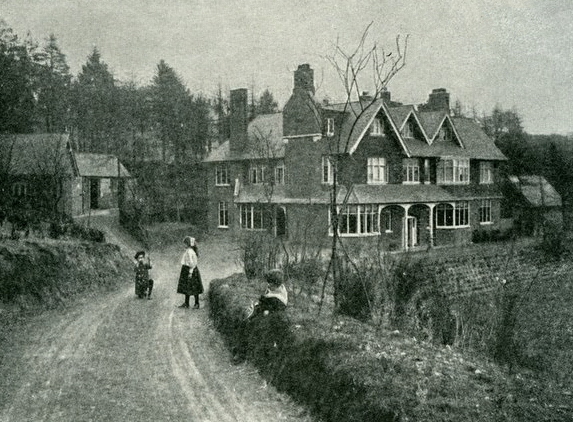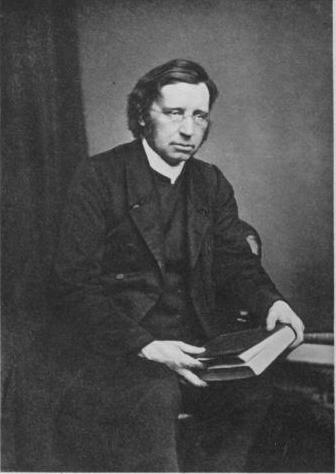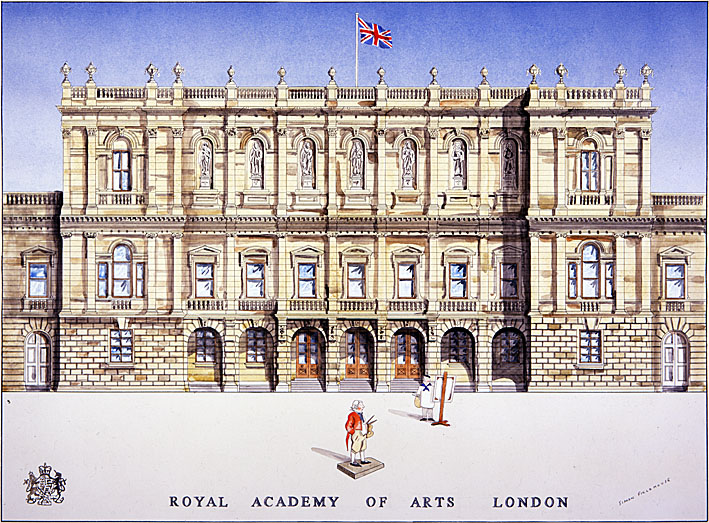|
Hugh Hutton Stannus
Hugh Hutton Stannus (21 March 1840 – 18 August 1908) was a sculptor, architect and author. In his early career he worked with the sculptor Alfred Stevens; he was in later life a lecturer at art colleges. Life Stannus was born in Sheffield on 21 March 1840; his father, the Rev. Bartholomew Stannus, was a member of an old Irish family, and his mother Jane was daughter of the Rev. William Hutton of Belfast. His first artistic training was gained in Sheffield under Henry Dent Lomas at the Sheffield School of Art, after which he was articled to the firm of H. E. Hoole & Co. in that town, whose foundry was then engaged in producing work from the designs of the sculptor Alfred Stevens. Early career with Alfred Stevens From this apprenticeship resulted a close acquaintance with the details of artistic metal casting. Some designs by Stannus for foundry work were selected for the Exhibition of 1862, and an "Essay on the History of Founding in Brass, Copper, and Bronze" won him in 188 ... [...More Info...] [...Related Items...] OR: [Wikipedia] [Google] [Baidu] |
Alfred Stevens (sculptor)
Alfred George Stevens (30 December 18171 May 1875), was a British sculptor. His major work is the monument to the Duke of Wellington in St Paul's Cathedral. Early life Alfred Stevens was born on 30 December 1817 at Blandford Forum in Dorset, the son of a decorator and joiner. At the age of ten, he entered his father's workshop as an assistant. In 1833, the rector of his parish enabled him to go to Italy, where he spent nine years studying at Naples, Bologna, Siena, Pompeii, Capri, Rome, Milan, Venice, and Florence where he studied for a time at the Accademia di Belle Arti. Stevens had never attended an English school. In 1841, Bertel Thorvaldsen employed him for a year in Rome. After a significant period of study and training throughout Italy, Stevens returned to England. Career In 1845, Stevens obtained a tutorial position in the Government School of Design at Somerset House, London, where he remained until 1847. In 1850 he became chief artist to the Sheffield firm of H.E. H ... [...More Info...] [...Related Items...] OR: [Wikipedia] [Google] [Baidu] |
Norman Macleod (1812–1872)
Norman Macleod (3 June 1812 – 16 June 1872) was a Scottish clergyman and author who served as Moderator of the General Assembly of the Church of Scotland in 1869/70. Early life Norman Macleod was born in Kirk Street, Campbeltown, to Norman Macleod and Agnes Maxwell; his paternal grandfather, a minister of the parish of Morvern in Argyllshire, bore the same name. His father, at that time minister of Campbeltown, was closely bound to the Highlanders of Scotland, catering to their spiritual and intellectual needs. He was the author of literature described by Professor Blackie as the "great work of classical Gaelic prose....written in a dialogue form, enriched by the dramatic grace of Plato and the shrewd humour of Lucian", and played a major role in the creation of an educational infrastructure for the Highlands and Islands. He was a supporter of the interests of the Highlanders. In 1827, Macleod became a student at the University of Glasgow; in 1831, he went to Edinbur ... [...More Info...] [...Related Items...] OR: [Wikipedia] [Google] [Baidu] |
Hindhead
Hindhead is a village in Surrey, England. It is the highest village in Surrey, with buildings at between 185 and 253 metres above sea level. It is best known as the location of the Devil's Punch Bowl, a beauty spot and site of special scientific interest, and as the site of the Hindhead crossroads, a formerly notorious congestion spot, where the A3 between Portsmouth and London was crossed by the A287 between Hook and Haslemere. The A3 now passes under Hindhead in the Hindhead Tunnel and its route along the Punch Bowl has been removed and landscaped, but the crossroads still exists for local traffic, as a double mini-roundabout.Ordnance Survey Hindhead is south-west of Guildford, the county town of Surrey, on the border with Hampshire. It is a ward in the district of Waverley, and part of the civil parish of Haslemere. The ward, which includes Beacon Hill, had a population of 4,292 at the 2011 Census. The place-name "Hindhead" is first attested in 1571, and means "hill ... [...More Info...] [...Related Items...] OR: [Wikipedia] [Google] [Baidu] |
St Paul's Ecclesiological Society
The Cambridge Camden Society, known from 1845 (when it moved to London) as the Ecclesiological Society,History of the Society Ecclesiological Society was a learned society founded in 1839 by students at to promote "the study of |
The Japan Society Of The UK
The Japan Society of the United Kingdom, founded in 1891, is an organisation that fosters British-Japanese relations. It is the oldest such organisation dedicated to inter-cultural understanding and positive relationships between a European Country and Japan. The society is also known as the ''Japan Society of London'', or simply as ''The Japan Society''. History The society grew out of a meeting of the International Congress of Orientalists, held in London on 9 September 1891, when a resolution was passed calling for the formation of a society "for the encouragement of Japanese studies and for the purpose of bringing together all those in the United Kingdom and throughout the world who are interested in Japanese matters". The society's founder, Arthur Diosy (1856-1923), was a debonair figure, who spoke fluent Japanese, and wrote several books including ''The New Far East. Membership The society reports that it has a membership in excess of 1,000 individual and corporate mem ... [...More Info...] [...Related Items...] OR: [Wikipedia] [Google] [Baidu] |
Hellenic Society
The Society for the Promotion of Hellenic Studies, known as the Hellenic Society, was founded in 1879 to advance the study of Greek language, literature, history, art and archaeology in the Ancient, Byzantine and Modern periods. The first President was J. B. Lightfoot, the biblical scholar and Bishop of Durham. Ioannis Gennadius helped found it.Francis R. Walton, "Joannes Gennadius: 1844–1932", ''The Book Collector'', Autumn 1964, p. 305–326 The Society has done this ever since by various means, chief among them being the annual publication of the ''Journal of Hellenic Studies'' and, since the 1950s, its supplement, Archaeological Reports, which are both supplied free of charge to members and subscribers of the Society. Occasional monographs have also appeared in the series Supplementary Papers; this series has now been replaced by the Society's Occasional Publications. Work The Society is based, together with the Society for the Promotion of Roman Studies, in the premises ... [...More Info...] [...Related Items...] OR: [Wikipedia] [Google] [Baidu] |
Society Of Arts
The Royal Society for the Encouragement of Arts, Manufactures and Commerce (RSA), also known as the Royal Society of Arts, is a London-based organisation committed to finding practical solutions to social challenges. The RSA acronym is used more frequently than the full legal name (The Royal Society for the Encouragement of Arts, Manufactures and Commerce). The RSA's mission expressed in the founding charter was to "embolden enterprise, enlarge science, refine art, improve our manufacturers and extend our commerce", but also of the need to alleviate poverty and secure full employment. On its website, the RSA characterises itself as "an enlightenment organisation committed to finding innovative practical solutions to today's social challenges". Notable past fellows (before 1914, members) include Charles Dickens, Benjamin Franklin, Stephen Hawking, Karl Marx, Adam Smith, Marie Curie, Nelson Mandela, David Attenborough, Judi Dench, William Hogarth, John Diefenbaker, and Tim Be ... [...More Info...] [...Related Items...] OR: [Wikipedia] [Google] [Baidu] |
Architectural Association School Of Architecture
The Architectural Association School of Architecture in London, commonly referred to as the AA, is the oldest independent school of architecture in the UK and one of the most prestigious and competitive in the world. Its wide-ranging programme of exhibitions, lectures, symposia and publications have given it a central position in global discussions and developments within contemporary architectural culture. History The Architectural Association was founded in 1847 as an alternative to the practice of training aspiring young men by apprenticeship to established architects. This practice offered no guarantee for educational quality or professional standards, and there was a belief that the system was open to vested interests, abuse, dishonesty and incompetence.Edward BottomsIntroductory lecture to AA Archives February 2010 This situation led two articled pupils, Robert Kerr (1823–1904) and Charles Gray (1827/28–1881), to propose a systematic course of training provided b ... [...More Info...] [...Related Items...] OR: [Wikipedia] [Google] [Baidu] |
Manchester School Of Art
Manchester School of Art in Manchester, England, was established in 1838 as the Manchester School of Design. It is the second oldest art school in the United Kingdom after the Royal College of Art which was founded the year before. It is now part of Manchester Metropolitan University. History The school opened in the basement of the Manchester Royal Institution on Mosley Street in 1838. It became the School of Art in 1853 and moved to Cavendish Street in 1880. It was subsequently named the Municipal School of Art. In 1880, the school admitted female students, at the time the only higher education available to women, although men and women were segregated. The school was extended in 1897. The school became part of Manchester Polytechnic in 1970 and is now part of the Faculty of Arts and Humanities at the Manchester Metropolitan University. Its 175th anniversary in 2013 was marked by the opening of the new Benzie Building and the refurbishment of the Chatham Tower. The school ... [...More Info...] [...Related Items...] OR: [Wikipedia] [Google] [Baidu] |
Royal College Of Art
The Royal College of Art (RCA) is a public research university in London, United Kingdom, with campuses in South Kensington, Battersea and White City. It is the only entirely postgraduate art and design university in the United Kingdom. It offers postgraduate degrees in art and design to students from over 60 countries. History The RCA was founded in Somerset House in 1837 as the Government School of Design or Metropolitan School of Design. Richard Burchett became head of the school in 1852. In 1853 it was expanded and moved to Marlborough House, and then, in 1853 or 1857, to South Kensington, on the same site as the South Kensington Museum. It was renamed the Normal Training School of Art in 1857 and the National Art Training School in 1863. During the later 19th century it was primarily a teacher training college; pupils during this period included George Clausen, Christopher Dresser, Luke Fildes, Kate Greenaway and Gertrude Jekyll. In September 1896 the school re ... [...More Info...] [...Related Items...] OR: [Wikipedia] [Google] [Baidu] |
University College London
, mottoeng = Let all come who by merit deserve the most reward , established = , type = Public research university , endowment = £143 million (2020) , budget = £1.544 billion (2019/20) , chancellor = Anne, Princess Royal(as Chancellor of the University of London) , provost = Michael Spence , head_label = Chair of the council , head = Victor L. L. Chu , free_label = Visitor , free = Sir Geoffrey Vos , academic_staff = 9,100 (2020/21) , administrative_staff = 5,855 (2020/21) , students = () , undergrad = () , postgrad = () , coordinates = , campus = Urban , city = London, England , affiliations = , colours = Purple and blue celeste , nickname ... [...More Info...] [...Related Items...] OR: [Wikipedia] [Google] [Baidu] |
Royal Academy Of Art
The Royal Academy of Arts (RA) is an art institution based in Burlington House on Piccadilly in London. Founded in 1768, it has a unique position as an independent, privately funded institution led by eminent artists and architects. Its purpose is to promote the creation, enjoyment and appreciation of the visual arts through exhibitions, education and debate. History The origin of the Royal Academy of Arts lies in an attempt in 1755 by members of the Society for the Encouragement of Arts, Manufactures and Commerce, principally the sculptor Henry Cheere, to found an autonomous academy of arts. Prior to this a number of artists were members of the Society for the Encouragement of Arts, Manufactures and Commerce, including Cheere and William Hogarth, or were involved in small-scale private art academies, such as the St Martin's Lane Academy. Although Cheere's attempt failed, the eventual charter, called an 'Instrument', used to establish the Royal Academy of Arts over a deca ... [...More Info...] [...Related Items...] OR: [Wikipedia] [Google] [Baidu] |






